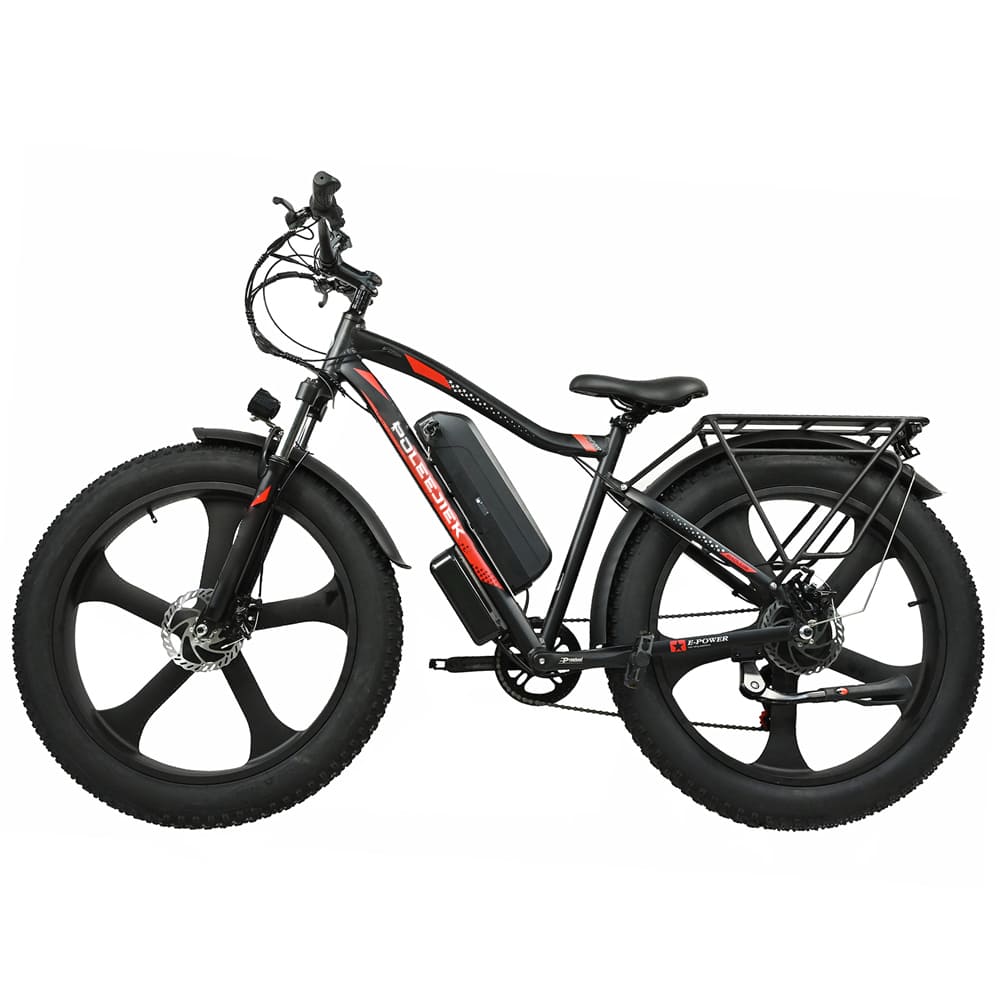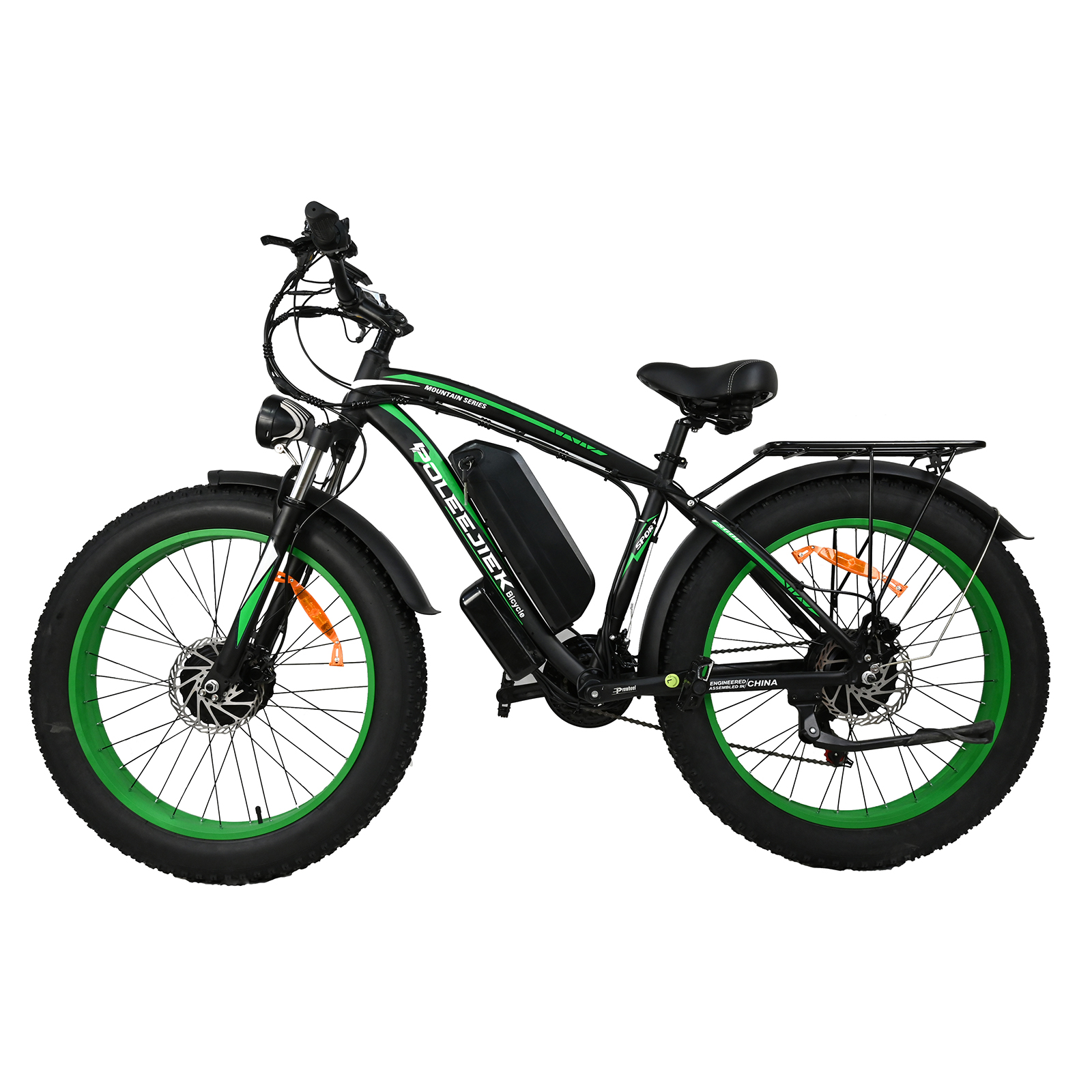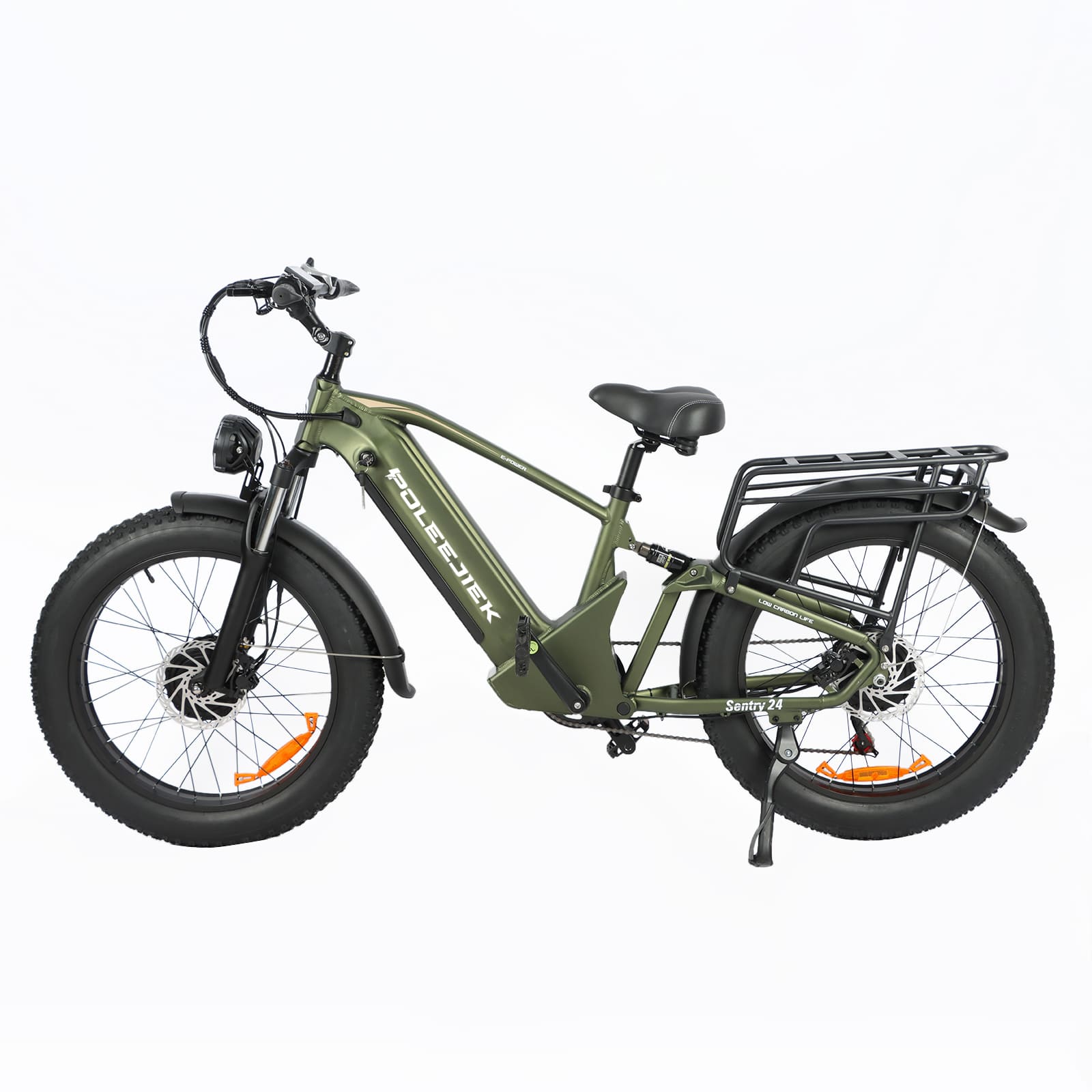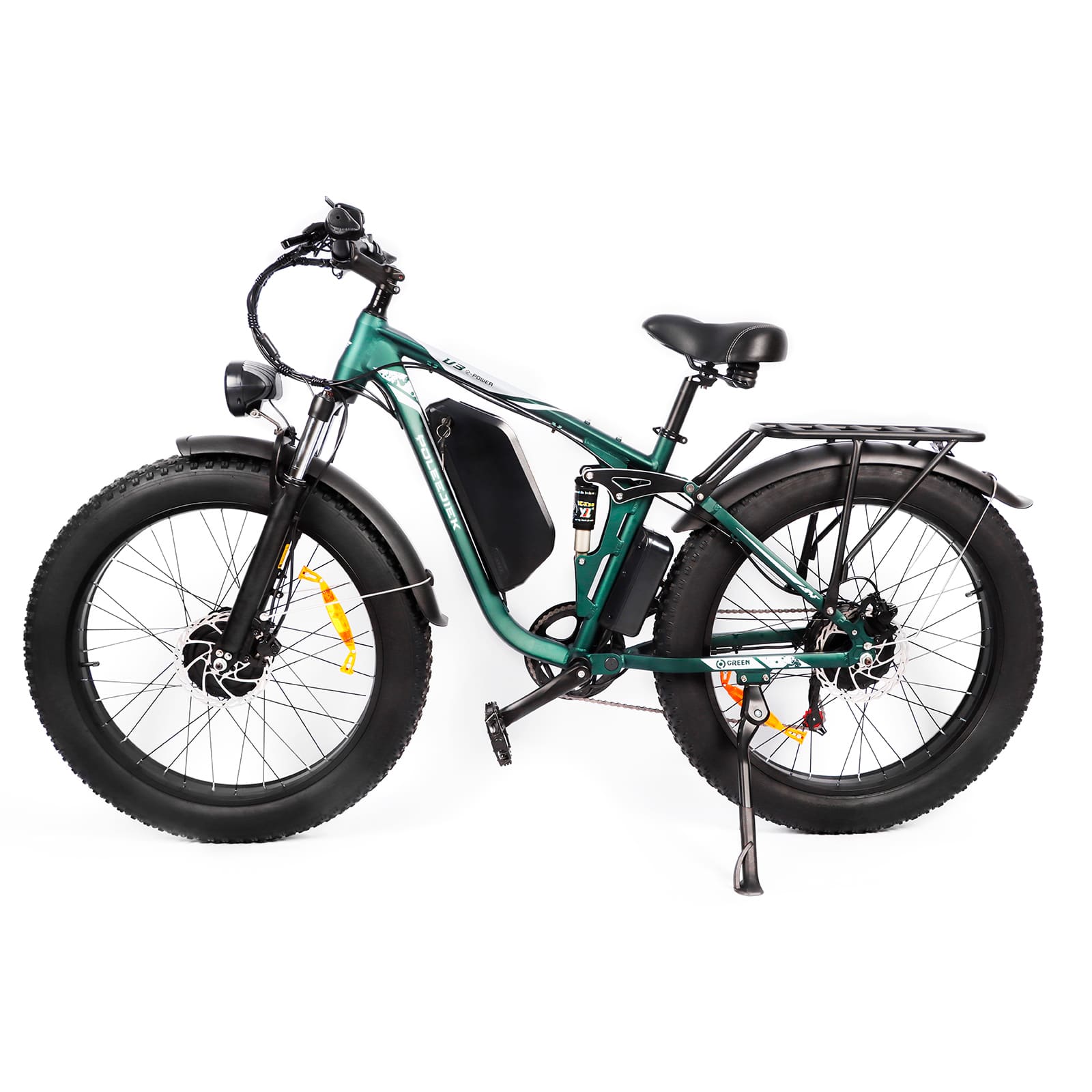Fat Tire E-Bike Guide : Pros, Cons & Performance Data | POLEEJIEK
Fat tires on a Fat Tire Mountain E-bike are a defining feature, but their purpose extends far beyond aesthetics. This guide, developed by the POLEEJIEK engineering team, explores the specific advantages these 3.8 to 5-inch tires offer, the performance trade-offs to consider, and how to optimize them for your ride.
The Core Advantages: Why Go Fat?
The primary benefits of fat tires revolve around their massive contact patch and air volume.
1. Unmatched Traction and Grip: A larger contact area with the ground dramatically improves traction. This is a game-changer on loose surfaces like gravel, sand, mud, or snow where standard tires would struggle. With a fat tire e-bike, the motor's power is transferred to the ground effectively, providing superior control and climbing ability on challenging off-road terrain.
2. Natural Suspension and Ride Comfort: The large volume of air in fat tires acts as a natural shock absorber. This significantly dampens vibrations from roots, rocks, and uneven trails, resulting in a smoother, more comfortable ride. This "cushioning" effect reduces rider fatigue on long journeys.
3. Superior "Floatation" on Soft Surfaces: The wide profile allows the bike to "float" over soft ground like deep sand or snow instead of digging in. By distributing the rider and bike's weight over a larger area, fat tires make it possible to explore environments that are inaccessible to other bikes.
Case in Point: A Rider's Experience on Coastal Dunes
Our test rider, Mark, took the POLEEJIEK TrailBlazer F5 to a sandy coastal area. By lowering the tire pressure to just 8 PSI, the bike effortlessly floated over loose sand. "A standard e-MTB would have instantly bogged down," Mark reported. "With the fat tires, I could maintain momentum and control, turning a difficult challenge into a genuinely fun ride. The bike's stability was incredible."
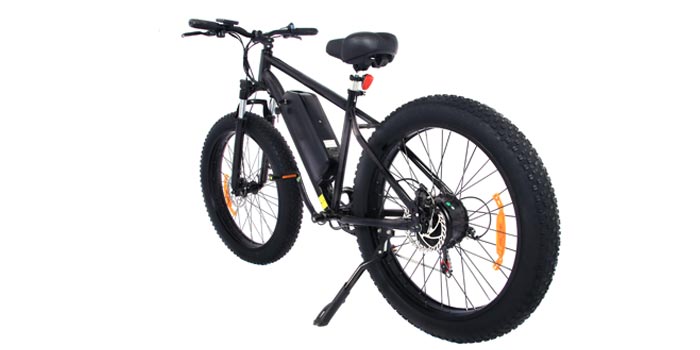
Fat Tire vs. Standard Tire E-MTB: A Data-Driven Comparison
To illustrate the differences, here is a simplified comparison based on our internal testing:
| Performance Metric | Fat Tire E-MTB (4.8" Tires) | Standard E-MTB (2.5" Tires) |
|---|---|---|
| Traction on Sand/Snow | Excellent | Poor |
| Rolling Resistance (Pavement) | High | Low |
| Average Weight Increase | + 5-8 lbs (2.3-3.6 kg) | Baseline |
| Estimated Battery Range Impact (Paved) | -10% to -20% | Baseline |
| Handling Agility | Stable / Slower to turn | Nimble / Faster to turn |
The Honest Truth: The Trade-Offs of Fat Tires
While powerful, fat tires are not without their disadvantages. Understanding these trade-offs is key to determining if a fat tire electric mountain bike is right for you:
- Increased Rolling Resistance: On hard surfaces like pavement, the larger contact patch creates more friction, requiring more energy from both the rider and the motor to maintain speed. This can lead to a noticeable decrease in battery range compared to a standard e-bike.
- Heavier Weight: The oversized tires and wider rims add significant weight to the bike, making it harder to accelerate, lift, and maneuver when the motor is off.
- Slower Handling: The gyroscopic effect of the heavy wheels means fat bikes are less nimble and slower to initiate turns than their narrow-tired counterparts. They excel in stability over agility.
- Higher Cost: Fat tires and compatible components are often more expensive to replace than standard bike parts.
Finding the Sweet Spot: A Guide to Tire Pressure
One of the biggest advantages of a mountain fat tire electric bike is the ability to run very low tire pressures. Adjusting pressure is crucial for performance. Here are our expert recommendations:
- 5-10 PSI (0.3-0.7 BAR): Ideal for very soft conditions like deep snow or loose sand. This maximizes the tire's footprint for floatation.
- 12-18 PSI (0.8-1.2 BAR): A great all-around range for most off-road trails, providing a balance of grip, comfort, and pinch-flat resistance.
- 20-25 PSI (1.4-1.7 BAR): Best for riding on firm ground or pavement to minimize rolling resistance and improve efficiency.
Pro Tip: To avoid pinch flats (where the tube is pinched between the rim and an obstacle), consider a tubeless tire setup, which is more resilient at lower pressures.
Conclusion: The Right Tool for the Right Job
In summary, fat tires on a mountain e-bike are a specialized engineering choice, not a gimmick. They provide unparalleled performance on soft and loose terrain at the cost of on-road efficiency and agility. For riders who prioritize all-terrain capability, comfort, and confidence to explore the path less traveled, a fat tire e-bike is an exceptional and versatile machine.
About the Author
This technical guide was written by the POLEEJIEK Engineering and R&D Team. With extensive experience in frame design, motor integration, and real-world trail testing, our team is committed to providing riders with accurate, in-depth knowledge to help them get the most out of their electric bike experience.



